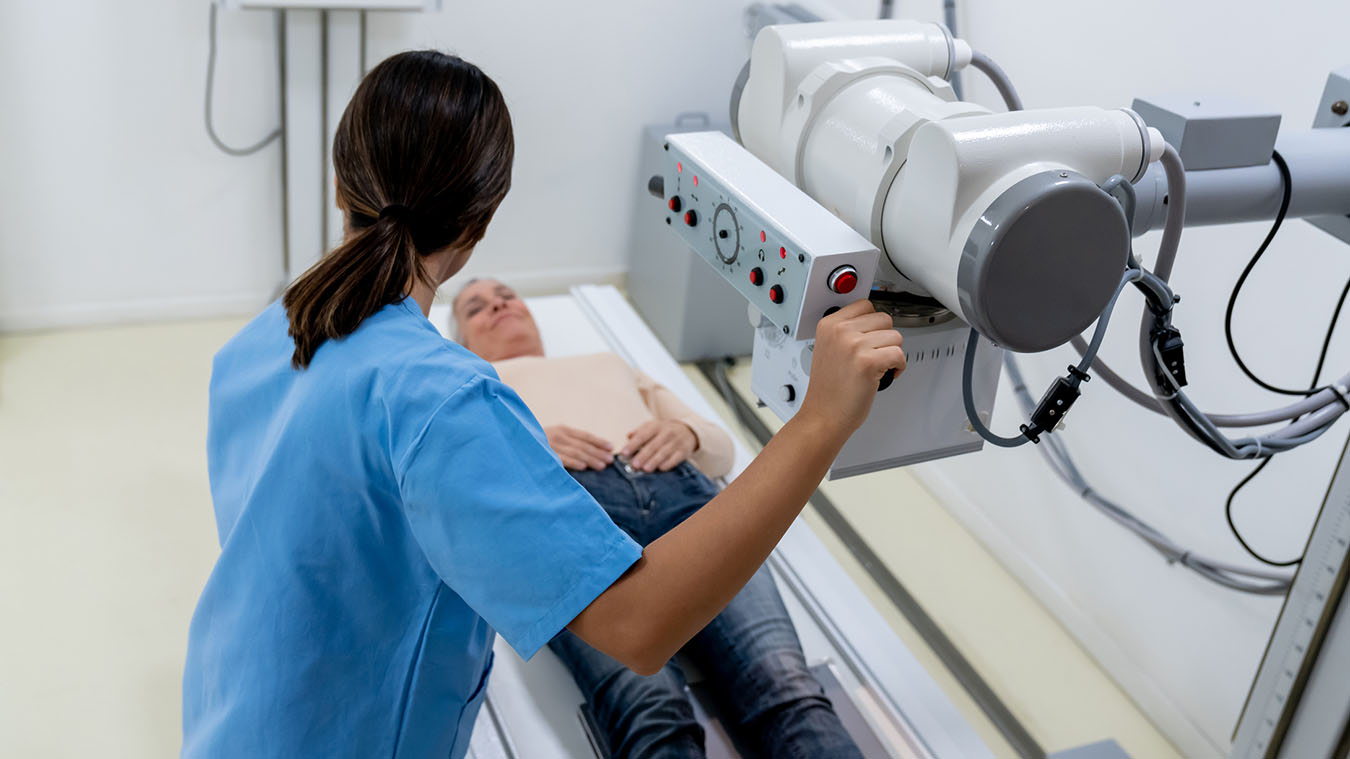TOLL FREE:
1-866-611-2665

Home CHANGES IN LEAD SHIELDING FOR DIAGNOSTIC EXAMS
Mayfair Diagnostics will no longer routinely be offering gonadal (reproductive organ) or fetal shielding while performing diagnostic imaging, such as during CT, mammography, pain management, and X-ray exams. This decision is based on current scientific research and consistent with recommendations from the Canadian Association of Medical Radiation Technologists and other provincial, national, and international regulatory bodies.
Patient safety and comfort remain Mayfair’s top priority and all exposures of radiation will continue to be held to the standard of ALARA (as low as reasonably achievable) for all medical imaging exams that involve radiation. This means that no or low exposure is best, and the risk-benefit ratio is always considered.
How does our new lead shielding policy align with the ALARA principle? The decision to no longer routinely use lead shielding was made for several reasons, all of which align with the ALARA principle.
In 70 years of research, no studies have proven the harmful effects of X-rays on reproductive organs or the fetus (unborn baby) during diagnostic imaging in the current dose range. In fact, studies have shown that the human body is not as sensitive to radiation as we used to believe, and routine use of lead shielding shows negligible benefit for the patient or fetus.
Medical imaging technology has improved dramatically over the decades. Using our current technology, we can take high-quality images with very small amounts of radiation. On average, patients receive 20-25 times less radiation than they did in the 1950s.
For example, Mayfair’s diagnostic imaging equipment uses automatic exposure control, which automatically stops exposure when a preset amount of radiation has been detected. This helps provide consistent high-quality images while ensuring radiation levels are automatically adjusted based on patient size.
Medical radiation technologists (MRTs) also follow various protocols to ensure the ALARA principle is followed:
Patients come in different sizes, which may cause shielding to be misplaced. Poorly placed shielding can impact the quality of the X-ray. It may also obscure anatomy that is important for an accurate diagnosis and cause the procedure to be repeated.
Every member of the Mayfair Diagnostics team is dedicated to ensuring our patients have the information they need to make informed decisions and are supported in those decisions. Your technologist will be happy to answer any questions you may have. And, if you feel more comfortable with it, lead shielding may still be requested.
For more information about the procedures offered at Mayfair Diagnostics clinics, please visit our services page.
REFERENCES
National Council on Radiation Protection and Measurements (2021). “NCRP Recommendations for Ending Routine Gonadal Shielding During Abdominal and Pelvic Radiography.” www.ncrponline.org. Accessed August 8, 2023.
Canadian Association of Medical Radiation Technologists (2023) “Patient Shielding Position: Frequently Asked Questions.” www.camrt.ca. Accessed August 8, 2023.
Canadian Association of Medical Radiation Technologists (2021) “Minimizing Patient Exposure.” CAMRT Member Code of Ethics and Professional Conduct. Accessed August 8, 2023.
Canadian Association of Radiologists (2021) “CAR Issues New Position Statement on Gonadal and Fetal Shielding for X-ray.” www.car.ca. Accessed August 8, 2023.
Fawcett, S.L. & Barter, S.J. (2009) “The use of gonad shielding in paediatric hip and pelvis radiographs.” The British Institute of Radiology. 2009;82(977):363-370. Accessed August 8, 2023.
Fawcett, S.L., et al. (2012) “More harm than good? The anatomy of misguided shielding of the ovaries.” The British Institute of Radiology. 2012;85(1016):e442-447. Accessed August 8, 2023.
Handloser, J.S. & Love, R.A. (1951) “Radiation Doses from Diagnostic X-Ray Studies.” Radiology. 1951;57(2):252-254. Accessed August 8, 2023.
Marsh, R.M. & Silosky, M. (2019) “Patient shielding in diagnostic imaging: Discontinuing a legacy practice.” American Journal of Roentgenology. 2019;212(4):755-757. Accessed August 8, 2023.
National Research Council. (2006) Health risks from exposure to low levels of ionizing radiation: BEIR VII. Published 2006. Accessed August 8, 2023.
Our Refresh newsletter delivers the latest medical news, expert insights, and practical tips straight to your inbox, empowering you with knowledge to enhance patient care and stay informed.
By subscribing to our newsletter you understand and accept that we may share your information with vendors or other third parties who perform services on our behalf. The personal information collected may be stored, processed, and transferred to a country or region outside of Quebec.
Please read our privacy policy for more details.